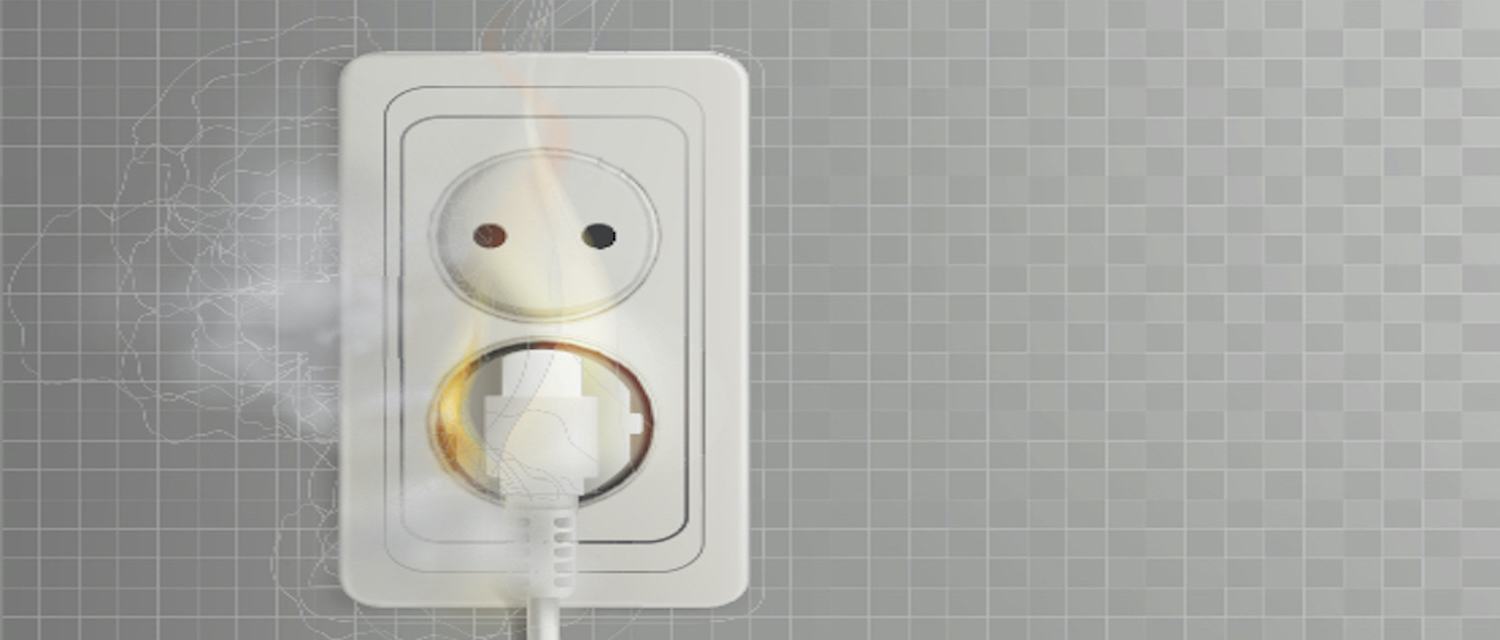What Is a Short Circuit & 3 Causes To Look Out For
If there’s one rule we all had as children, that was not to stick a metal fork or knife into a plugged-in toaster. And we were always told it would create a short. But what is a short circuit? What happens during one?
For the heater inside the toaster to function, electrical current must travel inside its conductive metal material. The electrical current travels in a loop, a closed circuit. When a metal knife is inserted in the toaster, a new path is presented for electricity to take.
A short circuit takes place when an undesired connection between two parts of an electrical circuit happens. Introducing a metal knife into a plugged-in toaster creates that connection you do not want.
The actual term short circuit is often incorrectly used, referring to any wiring problem related to the electrical circuit. Actual short circuits take place when circuit wires or connections are exposed or damaged. That is why these need to be fixed as soon as possible. Installing GFCI and AFCI outlets adds another layer of protection against short circuits, as these shut the power off to the circuit if leakages are identified. While GFCIs and AFCIs outlets should be installed in different areas, they can successfully coexist.
What Is A Short Circuit?
The short circuit definition describes the situation in which electricity diverges from the established pathway of an electrical circuit. The electrical flow finds a faster route than the one established in the wiring.
Electricity always looks to return to the ground and, in normal conditions, this means circling back to the service panel through the established wiring circuit and the utility wires. For different reasons, like loosen or broken wiring, electrical current can leak. When this happens, electrical current tries to return to the ground by following a shorter route. However, that route can pose certain risks. It can go through flammable materials, thus presenting the danger of an electrical fire. It can go even through a human being, thus presenting the risk of electrical shock, which can sometimes be lethal.
The reason why electricity can go through a person’s body or through flammable materials is that they represent a route of lesser resistance than the initial one, in the circuit’s copper wiring. When dealing with faulty or loose wiring, the current will always leap toward any path which offers the least resistance, and that includes the body of the person touching the switch.
3 Causes For Electrical Short Circuit
In other words, a short circuit refers to any condition in which an established wiring circuit is interrupted by an error in the wiring or its connections. However, there are two situations that people generally refer to as short circuits, but they are in fact different occurrences:
- Short Circuit: this is a term used by electricians to describe a situation in which a hot wire carrying live current touches a neutral one. When this happens, a large volume of current will travel through an unexpected route due to a lessened resistance. When this occurs, you may notice sparks or smoke or hear crackling.
- Ground Fault: this occurs when the hot wire carrying current makes contact with a grounded portion of the system like a metal wall box, a bare copper ground wire or a grounded part of an appliance. This causes the resistance to instantly drop, which makes the current flow through an unexpected route. While in this situation there may be fewer chances of flame or fire, shock is still a risk.
1. Faulty Appliance Wiring
It is important to check the wiring in your home extensively. If there are any problems with the wiring, when you plug an appliance into a wall receptacle, these issues will become circuit problems.
Note that short circuits can appear in power cords, within the appliance itself or the plugs. Make sure you have an electrician take a look at your appliances, especially the large ones like the oven or dishwasher. Some people can rewire the smaller ones by themselves, although if you’re dealing with faulty wiring, it’s best to have a professional take a look.
2. Faulty Circuit Wire Insulation
When the insulation is damaged or old, hot wires can touch with neutral ones. That’s why it’s best to check it thoroughly, as it could cause a short circuit. Also, pests like mice, rats or squirrels are a risk too, because they can gnaw on the circuit wiring and eventually expose the wire conductors and this could lead to a short circuit.
3. Loose Wire Connections
Loose wire connections or attachments are dangerous because they allow the hot and neutral wires to touch. This can cause a short circuit. Electricity can pass with minimal resistance through wires that are tight to the terminal. However, if the contact is not tight, then the resistance increases, which means heat increases as well. That’s why loose wires can become hot enough to cause electrical fires or hazard shocks.
Fixing this problem on your own is tricky, which is why if you notice faulty wire connections, make sure you call a professional immediately.







